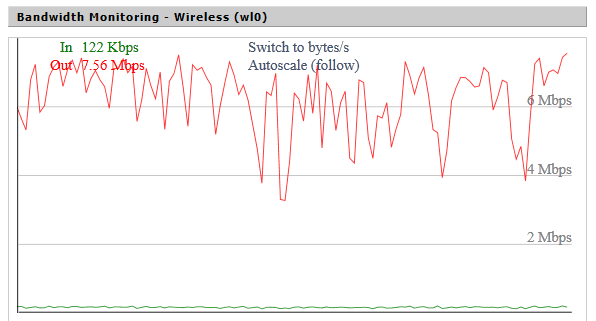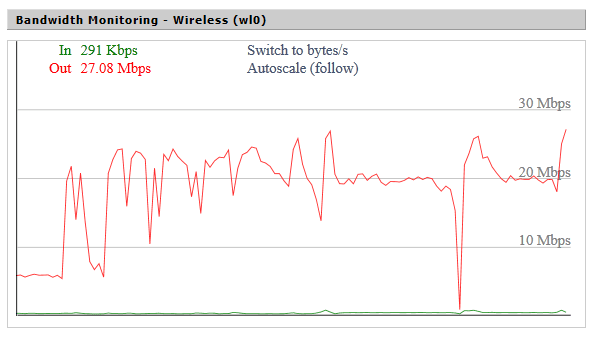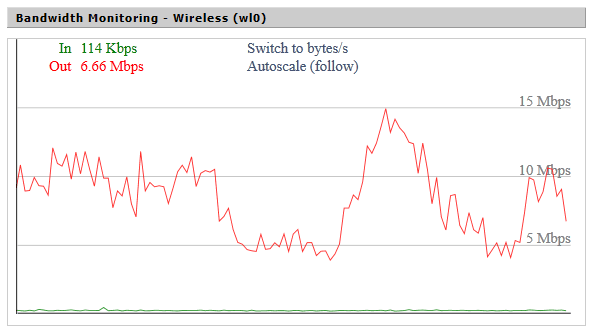This would be a nice alternative to the slingbox using VPN. Don't think the majority of people would be able to get this to work since most do not have very good upload speeds.
Joey Works Without Coax Cable?
- Thread starter CulpeperUplink
- Start date
- Latest activity Latest activity:
- Replies 227
- Views 81K
You are using an out of date browser. It may not display this or other websites correctly.
You should upgrade or use an alternative browser.
You should upgrade or use an alternative browser.
I am running a joey through 2 sling links right now with no issues. I am going to try using the revue as a wireless bridge later
Okay so digi got me thinking now that we know you can run a Joey over a standard Ethernet connection, how could we get some distance between the hopper and Joey.
Setting up a VPN would work but may not be as reliable for some folks as you can't get QoS over regular Internet so it way work good one day but not the next. I know for a VoIP system any latency north of 100ms users are going to start noticing bad voice quality. I am not sure if HD Video has less tolerance for latency, however I suspect it does. So this might work as good as a sling enabled mobile device.
Tossing money concerns out the window here is an option that I know would work.
Setup a point to point microwave system like the Motorola PTP 600.
Pluses:
Up to 300Mbps (150 up 150 down)
Up to 15 mile range with the standard integrated flap panel radio. 30 miles plus with optional antennas.
Simple networking setup as it can act like a bridge so the LAN segments can be the same on both sides.
Pretty much as dependable as a wired LAN no rain, fog, or snow fade. At work we have 2 links setup between two of our buildings 3 miles each and my ping speeds are about 2ms and as long as the radio has power and has not moved, have never had a problem in 2 years.
The not so good:
Need line of sight ( can't go thru hills or rock)
Operates in the 5.4 GHz range so not regulated by FCC. So first come fist serve.
Install but if you can point your dish and know about networks you are halfway there.
The really bad:
Cost only $20k per radio pair
So who might do this?
Say you have a barn/garage on a large parcel of land and want TV, Internet, and phone to this remote building and the main house. Might be the right solution sure beats running fiber.
Sent from my iPhone using SatelliteGuys
Or you could get 2 of these. Not as fast 150mbps but much cheaper. I'm using the older version (2.4ghz one) to connect 2 houses to share internet. Works really well.
My guess is that the extra ethernet port on the hopper is for passthrough to connect extra devices to your home network/internet. let's say you have a smart TV or a roku, then in theory you might be able to connect it all up one day.
Dish wants a controlled and dedicated network for their Hopper and Joeys via coax. A mixed network would just be more hassle for them troubleshoot/install/support.
Basically why the general feeling is to have coax ready as a backup in case something gets messed up connecting this way. You never know what bugs may crop up and will never get fixed.
Usually in computers/routers one port is for WAN (external network/internet) the other for LAN (internal network/local).
Last edited:
How has everyone's Joeys stability been in keeping the Joey linked to the Hopper via wireless? Anybody else experiencing link issues after the nightly reboot? If so, have you found a way to keep the Joey from delinking?
Mine only delinked once in two weeks and that was after the update to S211, a power reboot fixed it. Been rock solid otherwise.How has everyone's Joeys stability been in keeping the Joey linked to the Hopper via wireless? Anybody else experiencing link issues after the nightly reboot? If so, have you found a way to keep the Joey from delinking?
rglore said:Mine only delinked once in two weeks and that was after the update to S211, a power reboot fixed it. Been rock solid otherwise.
When this happens, do you have to connect via coax to bring it back up?
When this happens, do you have to connect via coax to bring it back up?
I noticed when I hooked my Joey up (S264, Hoppers are on S212) to my wireless Ethernet bridge, I didn't use coax at all and it worked fine. Could link to any of my 3 Hoppers.
Also, here's a post I made recently that pertains to this thread (made it in the Dual Hopper Integration thread) :-
I have 3 Hoppers and 2 Joeys (soon to be 1 Joey) and I noticed, after connecting the wireless adapter to the third Hopper, that it now shows up in the "My Hoppers" menu and also shows up in the "Whole-Home" menu even though this third Hopper is not even on the same MoCA network as the other two. Does this mean that Hoppers may eventually be able to link to each other over Ethernet/wireless just like Joeys have been reported to be able to link to Hoppers over Ethernet? No MoCA required between Hoppers?
If that is true, then wouldn't that render the isolators useless if they can still link together if they are on the same (Ethernet/wireless) LAN??
I was thinking about just connecting the "Client" ports together on the Solo/Duo Nodes I have in order to (hopefully) have them all on the same MoCA network, however I'm not sure if that will work or not. EDIT: It works!!
EDIT: Just hooked up the spare Joey to a WRT54GS with DD-WRT in wireless bridge mode. No coax hooked up whatsoever. Router is an ASUS RT-N16 (DD-WRT also) with two HAWKING HAI15SC Hi-Gain 15dBi Corner Antennas, and the third Hopper (has NO MoCA connection to the other two Hoppers) is connected via the Dish-supplied NETGEAR Wireless-N Adapter. WORKS PERFECTLY and that's halfway across the house. Attached is a reading of the bandwidth used when tuning into HD (HDNET) and SD (some random ENCORE SD channel.)
Note: It says almost the same bandwidth up AND down because when two wireless devices communicate data is sent to the router and then back to the other device and vice-verse. Also note that on the graph before the first drops is the HDNET HD bandwidth usage, the lower amount is ENCORE SD, then after the spike near the end we're back on HDNET.
View attachment 78012
This is neat as I can see almost EXACTLY how much bandwidth each channel has.
So my guess is that Hopper integration will work exactly the same way. We'll see!
Dish must not be getting too many complaints about this seeing how they kept this feature alive and not many complaints on here. Most probably do not know about the feature.
Dish must not be getting too many complaints about this seeing how they kept this feature alive and not many complaints on here. Most probably do not know about the feature.
Let's hope it stays that way
EDIT: Bandwidth used while playing back the latest episode of MythBusters :-

Bandwidth used just while paused on the MythBusters recording :-

Bandwidth used while fast forwarding the MythBusters recording :-

Bandwidth used on local ABC :-

Bandwidth used on G4TV :-

Last edited:
I upgraded my 622/211 to 1H/2J yesterday. Hopper has coax (of course) and is connected (wired) to my home network. First Joey is on coax. Second Joey I initially put on coax and let it download its software and get running. Then I removed the coax and connected its ethernet port to a Linksys wireless bridge (WET54GS5) as there is neither coax or wired ethernet in the room where I want to use it. It took a few seconds to "find" the Hopper again via the home network, but it works like a champ once it synced up again. And now I could theoretically take it anywhere in the house as long as the WiFi signal is good.
If you are currently using wireless with your Joey please PM me. I have something that you might be able to help me on, which could lead into other things in the future. 
If you are currently using wireless with your Joey please PM me. I have something that you might be able to help me on, which could lead into other things in the future.
Nominated for the most interesting post of the day!
So far only two replies... I need 20 - 30 people...
The two folks who have replied thank you I will answer them later when I get more replies so I can send everyone the details all at once... I am not igoring your PM's.
The two folks who have replied thank you I will answer them later when I get more replies so I can send everyone the details all at once... I am not igoring your PM's.
Sounds pretty interesting. I wish I knew what ideas you have in mind even though I do not have a Hopper/Joey. I had some great ideas for someone that may have issues with line of sight to the satellites.


